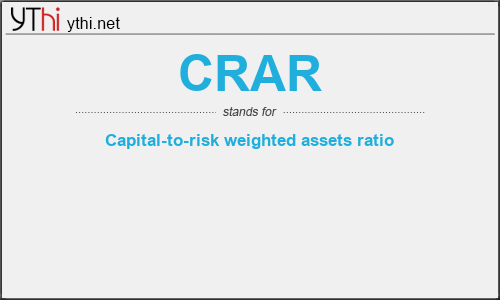What does CRAR mean? What is the full form of CRAR?
The Full Form of CRAR is Capital-to-risk weighted assets ratio.
Capital to Risk (Weighted) Assets Ratio (CRAR) is also known as Capital adequacy Ratio, the ratio of a bank’s capital to its risk. The banking regulator tracks a bank’s CAR to ensure that the bank can absorb a reasonable amount of loss and complies with statutory Capital requirements. Higher CRAR indicates a bank is better capitalized.
The Capital to risk-weighted assets ratio is arrived at by dividing the capital of the bank with aggregated risk-weighted assets for credit risk, market risk, and operational risk. The higher the CRAR of a bank the better capitalized it is.
The capital to risk-weighted assets ratio is calculated by adding a bank’s tier 1 capital and tier 2 capitals and dividing the total by its total risk-weighted assets. That is
Tier 1 CRAR =( Eligible Tier 1 capital funds)= (Credit Risk RWA + Market Risk RWA + Operational Risk RWA)
Total CRAR= (Eligible Total capital funds)÷ (Credit Risk RWA + Market Risk RWA + Operational Risk RWA)
CRAR is decided by central banks and bank regulators to prevent commercial banks from taking excess leverage and becoming insolvent in the process. The Basel III norms stipulated a capital to risk-weighted assets of 8%. In India, scheduled commercial banks are required to maintain a CAR of 9% while Indian public sector banks are emphasized to maintain a CAR of 12% as per RBI norms. In this system, the funded and non-funded items and other off-balance sheet exposures are assigned weights according to the risk perception and banks are required to maintain unimpaired minimum capital funds to the prescribed ratio on the risk-weighted assets. The notional amount of each asset is multiplied by the risk weight assigned to the asset to arrive at the risk-weighted asset number. Risk weight for different assets varies e.g. 0% on a Government Dated Security and 20% on an AAA-rated foreign bank etc.
CRAR
means
Capital-to-risk weighted assets ratio![]()
Translate Capital-to-risk weighted assets ratio to other language.


Leave a Reply
You must be logged in to post a comment.